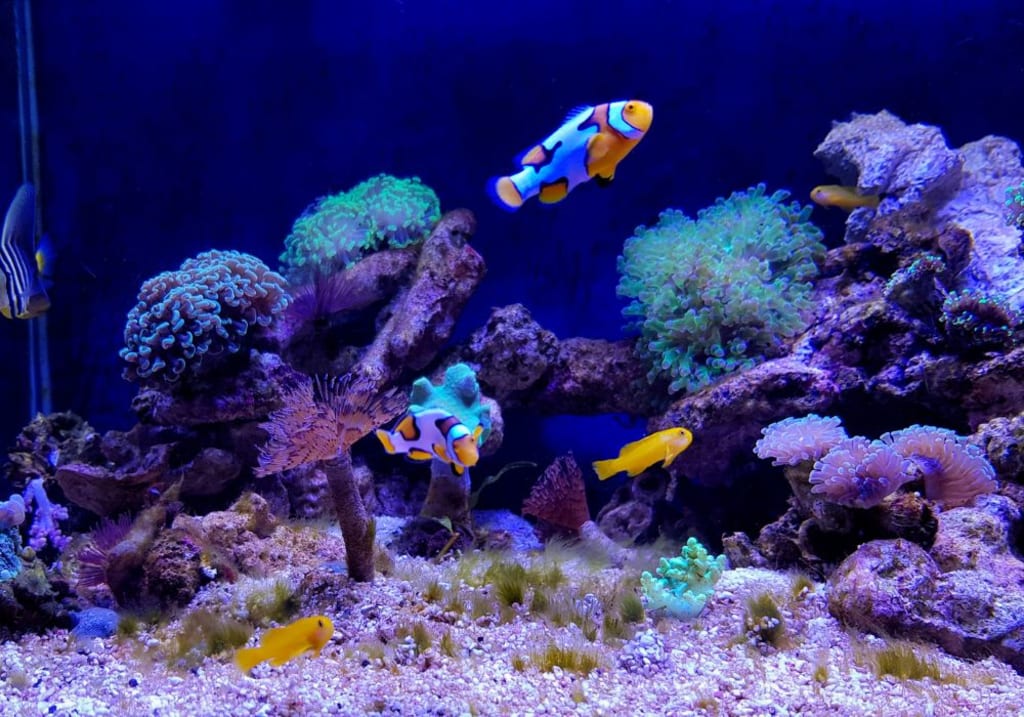
Nano reef tanks have become increasingly popular among aquarium enthusiasts due to their compact size and the ability to create a stunning underwater ecosystem in a small space. However, setting up a nano reef tank requires meticulous planning and attention to detail to provide the ideal environment for your marine life. In this comprehensive guide, we'll walk you through the essential steps to set up a thriving nano reef tank.
Choosing the Right Tank and Equipment
The first step in setting up a nano reef tank is selecting the appropriate tank size and equipment. Nano reef tanks typically range from 5 to 30 gallons, with the most common sizes being 10 and 20 gallons. When choosing a tank, consider the available space in your home and the number of inhabitants you plan to keep.
In addition to the tank, you'll need to invest in the following essential equipment:
- Protein skimmer: A protein skimmer is a crucial component that removes organic waste and helps maintain water quality.
- Lighting system: Proper lighting is essential for the growth of corals and other photosynthetic organisms. LED or T5 fluorescent lighting are popular choices.
- Filtration system: A combination of mechanical, chemical, and biological filtration is necessary to keep the water clean and clear.
- Heater and thermometer: Maintaining a stable water temperature is crucial for the health of your marine life.
- Powerhead or circulation pump: These devices create water movement, which is essential for gas exchange and nutrient distribution.
When selecting equipment, choose high-quality, reliable products that are specifically designed for nano reef tanks.
Cycling the Tank
Before adding any livestock, you'll need to cycle the tank to establish a stable nitrogen cycle. This process can take several weeks, during which time you'll need to monitor water parameters and make adjustments as needed.
During the cycling process, you'll need to add a source of ammonia, such as fish food or pure ammonia, to kickstart the nitrogen cycle. As beneficial bacteria grow, they'll convert ammonia to nitrite and then to nitrate, which can be removed through water changes.
Monitor the levels of ammonia, nitrite, and nitrate regularly using a test kit, and be patient as the tank matures. Once the cycle is complete and the water parameters are stable, you can begin adding livestock.
Selecting and Acclimating Livestock
When choosing livestock for your nano reef tank, it's important to select species that are compatible with the tank size and each other. Some popular choices for nano reef tanks include:
Corals: Soft corals, such as zoanthids and mushroom corals, are often a good starting point for nano reef tanks.
- Invertebrates: Shrimp, crabs, and snails can help maintain a balanced ecosystem.
- Small fish: Clownfish, gobies, and dartfish are suitable for nano reef tanks.
- Carefully research the specific requirements and compatibility of each species before adding them to your tank.
When introducing new livestock, it's crucial to acclimate them slowly to the new water parameters to minimize stress and ensure a successful transition.
Maintaining Water Quality
Maintaining excellent water quality is essential for the health and longevity of your nano reef tank. This includes regular water changes, testing water parameters, and making adjustments as needed.
Aim to perform small, frequent water changes of 10-20% to replenish essential minerals and trace elements. Monitor parameters such as pH, alkalinity, calcium, and magnesium, and make adjustments as necessary.
Additionally, maintain a consistent feeding schedule and avoid overfeeding, as excess nutrients can lead to algae growth and water quality issues.
Lighting and Lighting Schedules
Proper lighting is crucial for the growth and health of corals and other photosynthetic organisms in your nano reef tank. LED or T5 fluorescent lighting are popular choices, and you'll need to carefully consider the intensity, spectrum, and photoperiod (the duration of light exposure) to mimic the natural lighting conditions of a reef environment.
Experiment with different lighting schedules and intensities to find the optimal setup for your specific tank inhabitants.
Decorating and Aquascaping
The layout and decor of your nano reef tank can greatly impact the overall aesthetic and the behavior of your marine life. When aquascaping, consider using live rock, which provides a natural substrate for beneficial bacteria to grow and a hiding place for your inhabitants.
Arrange the live rock in a way that creates interesting visual depth and flow, and consider adding decorative elements such as driftwood or artificial corals to enhance the underwater landscape.
Troubleshooting and Common Issues
Even with the best planning and care, nano reef tanks can sometimes encounter issues. Be prepared to address common problems such as algae growth, pH fluctuations, and disease outbreaks.
Stay vigilant in monitoring your tank's water parameters and be proactive in addressing any issues that arise. Consult reliable resources and seek the advice of experienced aquarium enthusiasts or professionals if you encounter challenges.
Conclusion
Setting up a thriving nano reef tank requires a significant investment of time, effort, and resources, but the rewards of creating a captivating underwater ecosystem in a small space are well worth it. By following the steps outlined in this comprehensive guide, you'll be well on your way to establishing a successful and sustainable nano reef tank. Remember to stay patient, adaptable, and committed to the ongoing maintenance of your aquarium, and you'll be able to enjoy the beauty and wonder of a nano reef for years to come.
About the Creator
Hasan
Welcome...
In this site of mine you can learn amazing things and many information that you don't know so please subscribe to my site.
Enjoyed the story? Support the Creator.
Subscribe for free to receive all their stories in your feed. You could also pledge your support or give them a one-off tip, letting them know you appreciate their work.






Comments
There are no comments for this story
Be the first to respond and start the conversation.